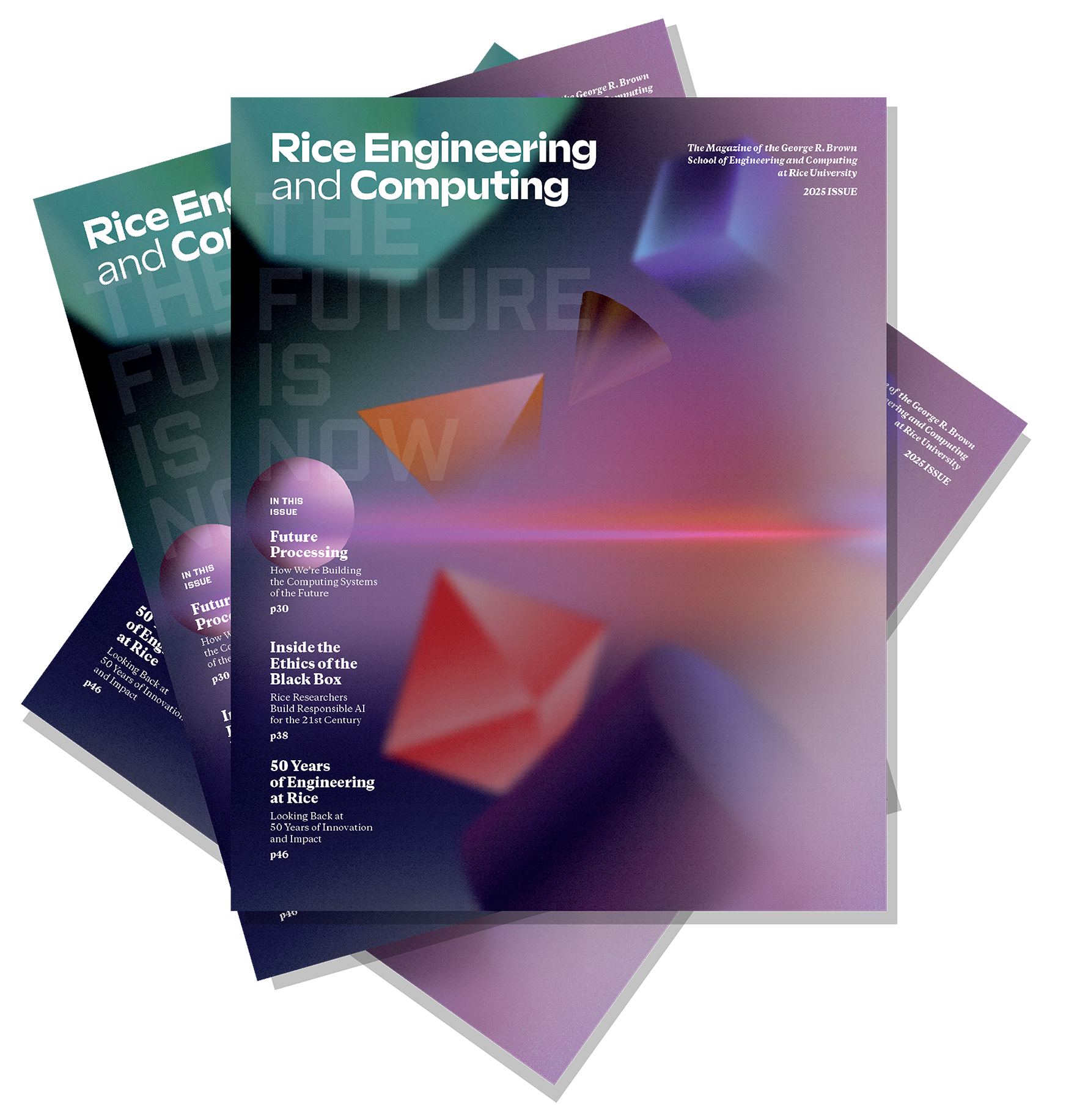
The 2025 issue of Rice Engineering and Computing Magazine is here!
In our 50th anniversary issue, we celebrate the deep and growing connection between engineering and computing. From our early breakthroughs in high-performance computing to today’s advances in AI and data science, Rice has long been at the forefront of computing innovation. This edition highlights some of the people, ideas, and investments shaping what’s next.
Navigating the Data Era: Privacy and Collaborative Analysis

By Maryam Aliakbarpour, Michael B. Yuen and Sandra A. Tsai Assistant Professor
Department of Computer Science
We live in an era rich with data. From personal devices to large-scale scientific projects, digital information is growing at an unprecedented rate. This abundance holds immense promise for breakthroughs in medicine, technology, and beyond. However, it also presents significant challenges in data analysis and computation. My research is dedicated to developing algorithms—the essential tools for data processing—that are smarter, safer, and more adaptable to the complexities of modern computation, thereby offering deeper insights into emerging challenges.
Data privacy is a primary concern. How can we analyze sensitive information, such as medical records or browsing histories, while ensuring individual privacy? To address this challenge, I develop algorithms that employ a robust mathematical framework known as differential privacy. The goal is to extract valuable insights without exposing personal details. For example, each user can submit a highly obfuscated version of their data—so altered by noise that it appears almost meaningless in isolation—while still allowing the data curator to aggregate this information. Although the curator cannot determine whether any individual has diabetes, they can reliably estimate that roughly 10 percent of the population is affected. Traditional approaches like anonymization or reporting general aggregates often fall short; both experimental and theoretical research have shown that these methods can inadvertently reveal identifying information. In privacy-sensitive applications, theoretical guarantees are indispensable, as absolute security requires rigorous mathematical proofs.
Another line of research that excites me is the use of auxiliary data and collaborative approaches in data analysis. Although it may seem that we are awash in data, many practical tasks involve relatively small datasets—particularly for organizations outside of large tech companies. For instance, a hospital might only have on the order of a thousand data points pertaining to a specific task, which is modest for many computational tasks. Yet, numerous hospitals may be willing to collaborate, pooling their data even if external sources are incomplete, noisy, or heterogeneous in quality.
My recent work focuses on integrating data from diverse sources while accounting for uncertainties in data quality. In one study, we introduced algorithms for hypothesis testing that leverage general population data while remaining robust against variable data quality. Consider clinical trials: although ample data may be available for the general population, information on specific minority groups can be scarce, potentially leading to biased outcomes. Our objective is to design hypothesis tests that work effectively for minority groups by intelligently incorporating insights from broader population data. The primary challenge is to use external data without presupposing that it is identical in quality or distribution to the primary dataset. Our approach allows the algorithm to autonomously adapt to the quality of external data, extracting the maximum amount of information without relying on predetermined quality assessments.
A further challenge arises when multiple users or organizations possess related but distinct datasets and tasks. In such collaborative settings, there is a need to uncover shared patterns while catering to individual requirements. To this end, I investigate meta-learning techniques that enable algorithms to learn from related tasks and adapt to new situations with limited data. These methods follow a two-stage process: first, by identifying general patterns collectively, and then by tailoring these insights to meet each user’s specific needs.
By developing rigorous mathematical frameworks and establishing provable performance guarantees, I am laying the groundwork for future systems that are both powerful and secure. In an increasingly data-driven world, these advancements are essential to ensure that technology benefits everyone.
